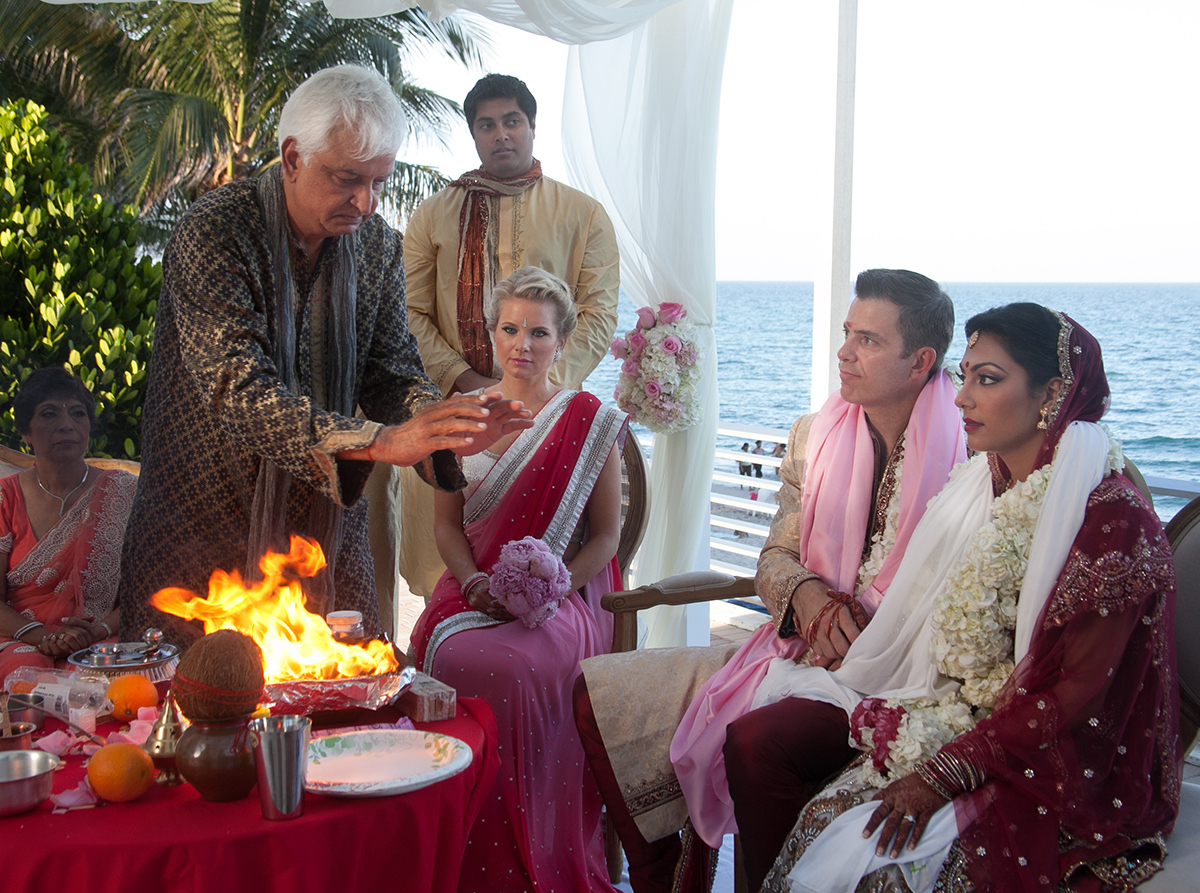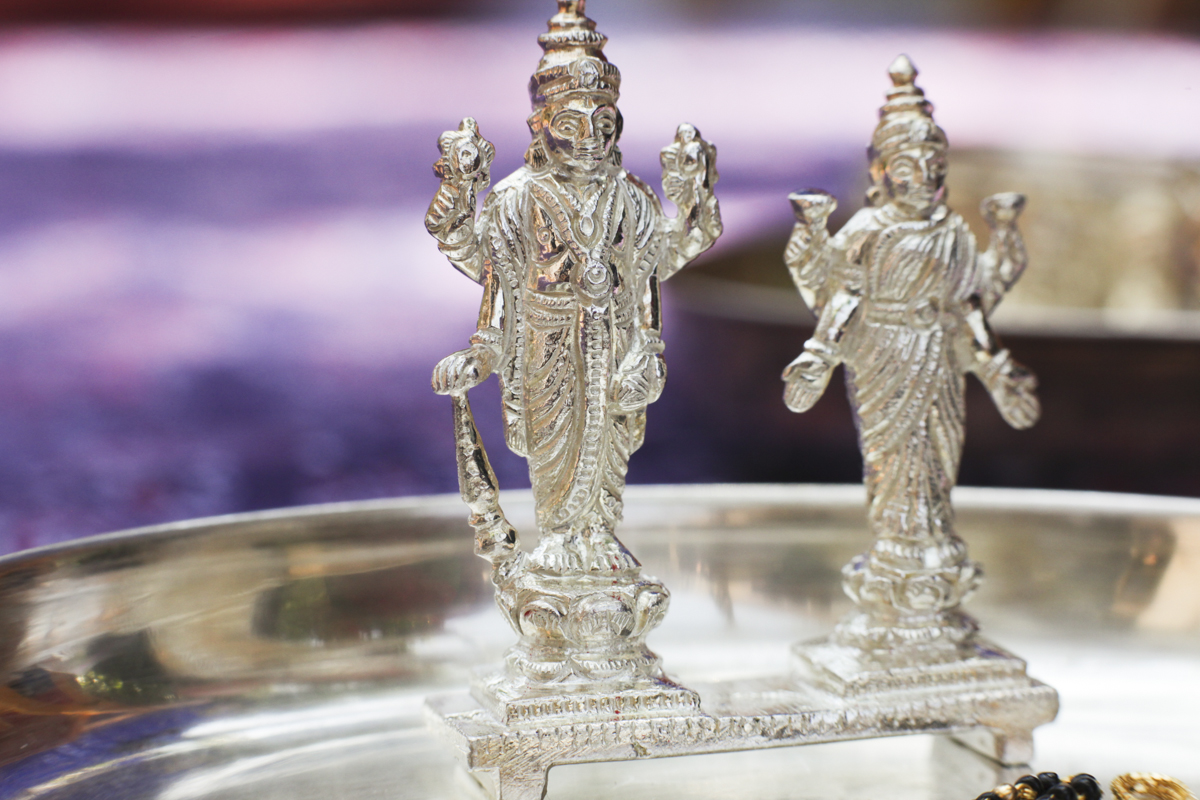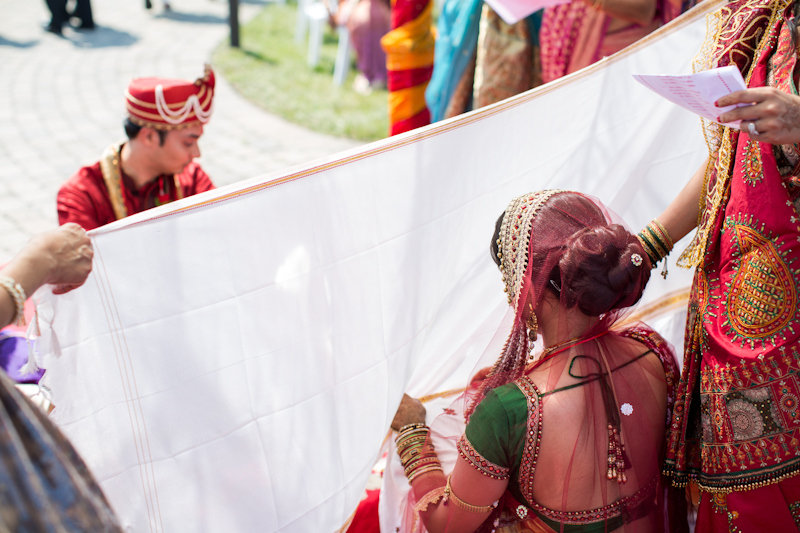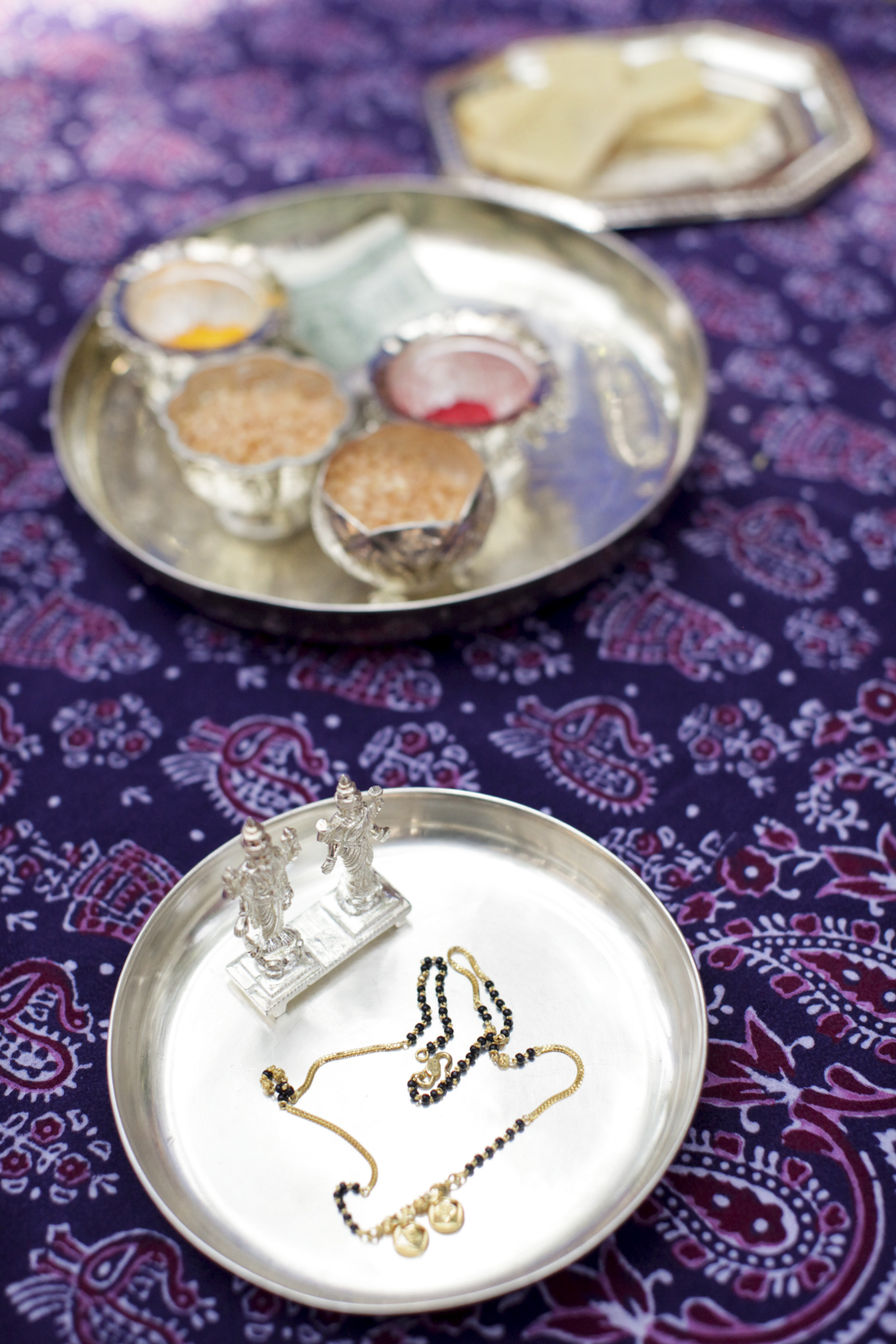Hindu weddings are chock full of events, ceremonies, and rituals. From the Baraat to the Vidai, couples and their families get no down time. Each item on the agenda is important in solidifying the bond between the bride and groom spiritually, but possibly the most important and sacred ceremony is the Kanyadaan.
{Photo courtesy of Vanita & Bryan’s Wedding via Jeff Koldony Photography, Inc.}
Kanyadaan literally translates to ‘gift of a virgin.’ Traditionally, when the father of the bride gives his daughter over to her groom’s family, her chastity was thought to bolster the prestige of the groom’s parents.
All of this is extremely patriarchal, don’t get me wrong, but the religious connotation of the Kanyadaan is poetic – as part of the ceremony, the bride accepts her husband as a manifestation of Vishnu and the groom accepts his bride as an incarnation of Lakshmi or, in some cases, a gift from the gods. The giving of their daughter as a gift to Vishnu is also supposed to increase the honor of the bride’s parents and wash them of their sins.
{Photo courtesy of Chethana & Eric’s wedding via Alders Photography}
The father of the bride, or an elderly relative if the father is not present, places the bride’s right hand upon her groom’s while reciting Vedic scripture. This is called the Hastamelap, ‘the joining of hands.’ The bride is given to the groom on the condition that he helps her achieve her dharma, artha, and kama.
{Photos courtesy of Preeya & Pramod’s wedding via IQPhoto Studio}
During the Kanyadaan ceremony, songs are sung about the groom, comparing him to Rama and Vishnu, while the bride’s side sings songs of loss for their daughter and for the money they spent on the wedding (ouch!). There may even be a song expressing the bride’s hurt and frustration at being given away, her ‘betrayal’ at the hands of her parents.
The curtain that had been separating the couple up until now is finally removed and the bride and groom exchange flower garlands as part of the Jaymala. Depending on the family, the Jaymala can come before or directly after the Kanyadaan. Regardless of the order of events, the Kanyadaan happens before the sindoor is placed in the bride’s hairline, marking her symbolic departure from virginity.
{Photo courtesy of Anokhee & Mital’s wedding via Mathy Shoots People}
Often, the Kanyadaan is combined with the Gaudaan, the exchanging of gifts between the bride and groom’s families, or it may come after. As part of the Gaudaan, the groom’s mother also gifts the bride a mangal sutra during the Mangalphere, marking the end of the Kanyadaan.
{Photo courtesy of Chethana & Eric’s wedding via Alders Photography}
The Kanyadaan is one of the holiest and most traditional parts of a Hindu wedding. It marks the movement for the bride from her family to her husband and his family and is thus an extremely poignant event. Feel free to cry and laugh, but remember – the bride isn’t losing her family, she’s gaining another one.
Note: The Kanyadaan ceremony, while incredibly patriarchal, has its place in Hindu tradition. That being said, you are under no obligation to do it in its customary way – feel free to leave the word ‘Kanyadaan’ out of the recitations or combine the ceremony with a sort of ‘Putradaan’ for the grooms as well. Marriage is the free gifting of ourselves to another, it should not feel one-sided or unfair.





